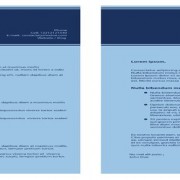Student Essay Writing Guide
The basic steps
When writing an essay, the planning stage is just as important as the writing itself. Deciding what information you would like to go into the essay. As well as how to structure this information to be most readable is extremely important when you are writing an essay, as it enables you to set out your arguments in a clear and logical manner. As long as you know the basic steps of essay writing, you should be well equipped to handle any essay topic.
-
Determine what type of essay it is
There are many different types of essays you might be asked to write throughout your school career. Some of the most common include, narrative, expository, argumentative, persuasive, comparative and literary. Are you present or telling a story (narrative) or are you providing an analysis (expository)? Do you have to convince the reader to adopt a certain point of view or to take particular action (persuasive)? Are you writing an essay about a book you read (literary)? Determining the type of essay is the first step to writing a targeted essay.
-
Create an essay outline
An essay outline is your road map. It will guide you through to the finished product. When you create an outline, you organise your thoughts about your topic. First, write your topic at the topic of the page. Then list all the points or arguments you want to make about the essay topic. Finally, list the facts, examples and statistics that support those points or arguments.
-
Develop a thesis statement
Your thesis should inform the reader what point you will be making or what question you will be answering about the topic. In other words, it is a prelude to your conclusion. A thesis statement should be as specific as possible and address one main idea. Strong theses also take a stand or illustrate the controversial nature of a topic.
-
Introduce your topic
The first paragraph of your essay will introduce your topic and provide direction for the entire essay. The introduction should discuss your main idea, or what the essay is about. Then state your thesis and points or arguments that support your thesis.
The introduction also sets the tone for your essay, and you want to grab the reader’s attention with interest and clarity. To capture the reader’s attention, you can make a challenging claim about the topic or present some surprising (but factual) information.
-
Write the body of the essay
The body of the essay provides details for the points in your introductory paragraph that supports your thesis. Take the points you listed in your introduction and discuss each in one body paragraph. First, write a topic sentence that summarises your point then explain why you feel the topic sentence is true. Finally, support your argument with evidence such as facts, quotes, examples and statistics.
-
Present your conclusion
The conclusion summarises the essay and gives the reader closure. In three or four concise sentences, you should reiterate your thesis and review the main points of the body of the essay. Just be sure not to restate your previous words exactly. You can even briefly describe your opinion of the topic. Your final sentence should uphold your main idea in a clear and compelling manner.
Obtain an instant quote for our proofreading service
At Express Proofreading we offer a professional proofreading service. We are able to ensure that your work is not only free from spelling mistakes and grammatical errors but we also check syntax, sentence structure and are able to recommend improvements and suggestions that are relevant to your work. We will also check that your tables and footnotes are accurate and consistent with your bibliography.
To obtain an instant quote for us to proofread your work, click the Instant Quote button below and upload your document and our Quote Generator will calculate an instant quote based upon the word count of your document. Once you are happy with your quote, you can then click Place Order and proceed to our secure checkout page.





